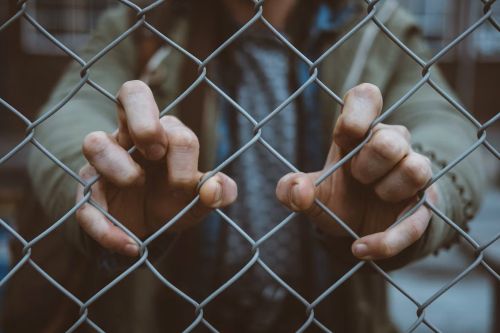Part 4 – The Lawful, the Vulnerable and the Vanished
They followed every instruction. Showed up for check-ins. Paid taxes. Kept their appointments. Taught Sunday school. Filled out the forms.
They were told to wait. And they did. For years.
Then one morning, or afternoon, or evening, they were gone.
Take Maria and José in Ohio. Green card applicants with three U.S.-born children. For a decade, they built a life, brick by brick, paycheck by paycheck. ICE detained José outside a Home Depot parking lot after a routine address check. Maria disappeared three days later at her annual immigration check-in. Their youngest still sleeps with their wedding photo clutched in one hand.
Or David, a caregiver in Virginia, who overstayed his visa by eight months to care for his dying aunt then volunteered to leave the country voluntarily. He was detained anyway at the airport. Three letters of recommendation from hospice nurses couldn’t prevent what the system had already set in motion.
They weren’t hiding. They were building. Their mistake wasn’t crossing illegally or fleeing detection. Their mistake was being visible. In a system engineered to equate presence with threat, rule-followers disappear just the same.
And the headlines keep proving it.
In June 2025, immigration agents detained nearly 80 workers during a surprise raid at Glenn Valley Foods in Omaha. The majority had no criminal record. One was arrested while trying to deposit payroll funds. Another, Jazon Gonzalez Perez, was apprehended after taking a wrong turn into Offutt Air Force Base. He was trying to do his job as a restaurant manager. His employer, a Navy veteran, could only say: “I thought we were arresting gang members. He’s none of those.”
Still, he was taken.
Just days earlier, another story broke from Massachusetts: ICE had been coordinating arrests during USCIS check-ins, detaining individuals mid-process, even as they pursued lawful status through marriage, asylum, or sponsorship. One woman was taken moments after completing her green card interview. Her husband never got to say goodbye.
This isn’t a breakdown of the system. This is the system, working exactly as designed when discretion disappears and enforcement becomes the goal itself.
“How do I explain to my son that Mr. Ramirez didn’t do anything wrong?” asked one New Jersey mom. “He just didn’t have the right piece of paper yet.”
Even lawful presence is no shield when enforcement is erratic, punitive, and disinterested in context. When administrative backlogs become life sentences. When humanitarian waivers get denied with a click. When the law bends not to justice, but to quotas. And when an administration retroactively changes the status of thousands, revoking protections, reclassifying categories and turning legal residents into deportation targets overnight.
These rules don’t protect. They decide who vanishes next.
The lawful fear to check in.
The vulnerable dread a knock at the wrong hour.
And the rest of us watch with growing unease as the boundaries of belonging blur.
But there’s another current beneath the fear:
- A pastor who keeps calling ICE on behalf of her parishioners.
- A DMV clerk who reminds applicants what not to say aloud.
- A landlord who hides rent receipts so tenants seem undocumented enough to avoid digital tracking. (Some landlords, aware that their tenants are at risk of immigration enforcement, may intentionally avoid documenting rental payments in official systems because such documentation could confirm that a person lives at a particular address, making it easier for immigration authorities to track or detain them).
- A veteran who speaks out when his employee is taken anyway.
Quiet defiance pulses just beneath compliance.
Deep down, we know what’s happening isn’t about legality. It’s about loss. And the question echoing across neighborhoods is no longer, “Were they legal?” but “Why did they disappear?”
They didn’t disappear by accident. And silence doesn’t have to be the end of their story. Call your representatives. Challenge the myth that legality is protection. Share their names. Share their stories. Support the organizations turning fear into defense, and neighbors into advocates. When the lawful vanish, the rest of us decide what happens next.
Coming next: “When Neighbors Become Organizers”
At first, they left casseroles. Then they made calls. Then they marched. In Part 5, we step into the living rooms, church basements, and WhatsApp threads where grief becomes strategy. This segment traces how ordinary neighbors, once silent, now galvanized, begin to organize not just in memory, but in defiance.
Resources for Immigrant Support: Legal Aid, Community Services, and Where to Give
